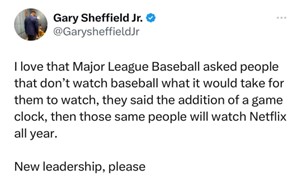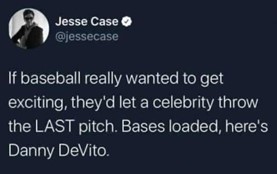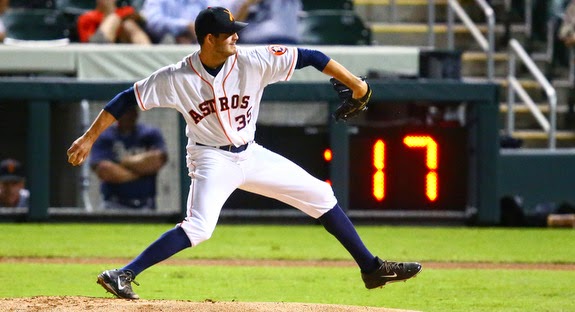MLB’s on the clock. Literally.
“Baseball was made for kids, and grown-ups only screw it up.” Baseball Hall of Famer, Bob Lemon
Major League Baseball has implemented some new rule changes for the 2023 season. In doing so, did grownups screw up baseball? Maybe. Maybe not. It really depends on who you ask.
There has been growing concern from MLB over the past few years about the decline in fan interest. There has been a steady decline in folks tuning in to Baseball’s biggest events. According to an article by the Michigan Journal of Economics, the MLB All-Star Game attracted about 22 million viewers in 1992. Only 7.5 million tuned into the 2022 Mid-Summer Classic. Last year’s World Series saw an average of 11.8 million viewers. That’s a 50% decrease from the 2016 World Series. Attendance across MLB parks has decreased since 2011 as well to the clip of 14% in that timeframe.
Those numbers are concerning for baseball. You can’t help but ask if “America’s Pastime” is dying when presented with those statistics. The MLB offices have been trying to figure out the reason as to why less people are tuning in to baseball games these days. I understand why fewer people attend games in person. Ticket prices are one thing. Concessions are another story. Don’t even get me started on parking. For example, it costs $25 to park, not attend the game, but to park your car at Guaranteed Rate Field – home of the Chicago White Sox. I’m sure there are stadiums that charge more, but still.
MLB teams will likely not reduce the prices of tickets, concessions, parking or even agree to slash the cost of one of those souvenir mini baseball bats. Why would they sign up for a reduced income? Why would anyone sign up for less money? That genie’s out of the bottle, and he’s not going back in. Besides, that doesn’t explain why fewer people are watching baseball games on TV. Could it be that fans are turned off by how much major league baseball players these days?
That’s old news. Don’t worry, though; MLB has a plan. They’re implementing it before our very eyes - at least to those who are still watching anyway. What MLB Commissioner Rob Manfred and the baseball higher-ups have done is implement several changes that have taken effect during Spring Training:
Larger Bases – First, Second, and Third base will now be 18-inch squares, up from 15.
No more crazy shifts – Two infielders must be on either side of second base. All four infielders must have both feet within the outer boundary of the infield while the pitcher is on the rubber.
Automatic runner on second base in extra innings – This rule was said to be going away, but that isn’t the case. Each team will start extra innings with a runner on second base.
Restrictions for position players being used as pitchers – Position players won’t be able to take the mound unless his team is down 8 runs or his team is up 10 in the 9th inning.
Implementation of a Pitch Clock
Personally, I don’t mind the bigger bags or eliminating shifts. When a position player can or can’t pitch isn’t that big of a deal. However, starting extra innings with a runner on second drives me nuts. It screams tee-ball, participation trophies, and rookie mode. The spirit of the run makes sense: MLB doesn’t want 20-inning games and their teams to exhaust their bullpens in a single game. I get it. I just don’t like it. Sure, the hardest thing to do in sports is hit a baseball. Still, why make it easier for PROFESSIONAL ballplayers? That’s not the rule implementation that everyone is talking about this spring, though.
About that pitch clock. It’s a little complicated. Pitchers aren’t the only ones affected too.
Manny Machado. He’s the answer to a Spring Training trivia question: Who is the first player to have an automatic strike called against him for not being ready in the batter’s box? When asked about it after the game, Machado said that he expects to start a lot of at-bats this season with an 0-1 count as a result. Here’s a breakdown of the new MLB pace-of-play rules surrounding the pitch clock:
A pitcher must begin his motion before the expiration of the 15-second timer, or 20 seconds with runners on base. If a pitcher doesn’t start his motion in time, it’s an automatic ball.
Pitchers can step off the rubber twice per plate appearance. The clock resets each time he steps off the rubber. A third-time results in an automatic ball.
A hitter must be in the batter’s box with at least eight seconds left on the clock. An automatic strike is called after that. They get one timeout per plate appearance. Somewhere, Nomar Garciaparra is rolling his eyes. He would strike out before re-strapping his batting gloves…for the third time!
There is a 30-second clock for pitchers between batters.
MLB decided that games were taking too long and that too much time had passed between any action. Manfred and Company believe that if they speed up the pace of play, then more people will watch. It’s a fair observation. To me, you either like baseball or you don’t. I’ve often heard from many people who do not like baseball is that “it’s boring” or it takes forever for something to happen. There’s nothing like taking in a live baseball game during the summer with some friends. Watching from home on TV isn’t the same. Hell, if you’re bored, then just change the channel. No wonder they want to speed up the pace of play. Basketball has a shot clock, and football has a play clock. I can be convinced that a pitch clock in baseball makes sense.
There are people in Major League Baseball who have gone on record as being in favor of the pitch clocks. San Diego Padres manager Bob Melvin is one of them. Mets ace Max Scherzer believes the new rules favor pitchers because they will get to dictate the pace. Yankees star Aaron Judge likes it but for the opposite reason. He believes the hitters gain an advantage by having pitchers constantly on the move and tiring them out. Then you have those who are completely against the pitch clock…


Alright. I think I found the potential new leader of MLB right here! What do you think?

C’mon. Admit that you wouldn’t love seeing Danny DeVito trot out to the mound to pitch to the final batter, assuming that he’s not pitching for your team. Sign me up! Maybe it’s only a matter of time until DeVito pitches for the Savannah Bananas…
Back to the pitch clock. It’s safe to say that it will take some time for the players to adjust to the new rules. Said rules were made for a pitcher like former White Sox great Mark Buehrle. He used to pitch as if he was double-parked. The same rules would have certainly affected long-time MLB pitcher Steve Trachsel. He took so long in between pitches that the man was nicknamed “The Human Rain Delay!” There have been several instances where an automatic ball was called against a pitcher or an automatic strike was called on a batter for not being ready in time. Some of those instances were weirder than others…
The Braves and Red Sox were tied 6-6 in the bottom of the ninth inning last Friday. Braves infield prospect Cal Conley came up to the plate with the bases loaded and two outs. He had a chance to win the game for his club and possibly boost his chances to move up from Class A+ ball this season. What an opportunity. Conley worked his at-bat to a full count. And then, it happened. The ump made the call. Conley thought he was being awarded a ball and forced in the game-winning run. Instead, the ump called strike three because Conley wasn’t set before the 8-second mark. The game ended on an automatic strike call in a tie since it’s Spring Training. Wait until that happens in the regular season or the playoffs!
Joe Mantiply of the Arizona Diamondbacks was finishing up with warmup tosses ahead of the Top of the 3rd inning of the Cubs/Diamondbacks matchup on Monday. He was getting ready to face Cubs outfield prospect, Brennan Davis. Before Mantiply even threw a pitch to Davis, the count was 1-1. How? More importantly, why? Mantiply didn’t finish his warmup pitches within the allotted time, and Davis wasn’t set in the batter’s box.
Thankfully, it’s only Spring Training. Hitters and pitchers still have some time to adjust. Old habits die hard, though. These new rule changes, primarily the pitch clock rules, will take a while to get used to. MLB is rolling the dice with implementing and enforcing a pitch clock. They are banking on the faster pace of play, drawing better TV ratings, and bringing fans back to the ballpark. The strategy could work. Or it could push more fans away, even the baseball purists. I’m sure that MLB hopes that games won’t be decided by an automatic ball or strike.
Wait until THAT happens in the regular season or the playoffs! We shall see exactly how many fans will be watching then.
Main Photo Credit: FenwayNation.com
Story Photo Credit: Twitter.com
